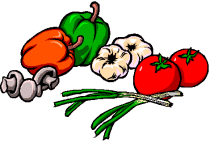![]()

AN INTRODUCTION TO COMPANION PLANTING
Many gardeners and farmers have long known that plants grow better when they have other plants nearby. The opposite is also true. The idea that plants had "friends" and "foes" was discounted by many experts as unscientific for some time, but the theory has been studied, found to have a sound basis, and scientists have given it a name, allelopathi. The ways in which a plant can help or hinder another is either through chemicals that are exuded through the roots or from the leaves. Pine trees arid eucalypts, for example, release substances into the soil around them to inhibit the growth of other plants close by that would compete with them for nourishment. The aroma given off by some plants could also be a factor in the effect they have. You will find a number of books on the subject in the gardening section of bookstores, and we would suggest that you get one of them if you want to follow up on the subject. This booklet is intended as an introduction to an interesting and helpful topic. Several things must be kept in mind as you learn about companion planting. Some of the books on the subject were written in other countries, and what is true of those environments might not be true in ours. As with most aspects of gardening, you may hear claims made with great fervency, but which may have no basis in fact. It can be confusing but keep an open mind and check out what you have heard with some other knowledgeable person. In the end, however, you will have to try things out for yourself.
This, by the way, is one of the advantages of belonging to HOGS. Most of the members have already found out what works here through trial and error, and as a member, you can avail yourself of that knowledge and expertise. As it has been said, you don't have to keep on re-inventing the wheel. Companion planting means that the friends should be in close proximity to whatever is to be helped. They will not have influence if planted a couple kilometres away. In the same way, to say that a plant is a foe does not mean that it cannot be in your gardcn at all. You only need to make sure that the foes are kept a good distance away. For example, the onion family are not good friends to the legumes such as peas and beans. So plant your onions in a different bed to the peas. Just make sure they are not next door to each other. The following information comes from work in actual gardens, and can be acted upon with confidence. The friends of each plant are listed first, and then the foes of that plant, if there are any. By friend, we mean plants that help the plant in question to grow and thrive. By foe, we mean plants that will inhibit the growth and well-being of the plant in question in some way.
| PLANT | FRIENDS | FOES |
| Artichoke, Jerusalem | Cucumber, tomato,sweetcorn. | Potatoes |
| Asparagus | Basil, parsley, tomato,capsicum. | |
| Beans | Carrot, celery, cabbage, cauliflower, cucumber, herbs, potatoes. | Beetroot, fennel, onion, garlic, gladiolus. |
| Beetroot | Kohlrabi, onions | Beans |
| Cabbage tribe | Beetroot, celery, dill, chamomile, onion, mint, peppermint, potatoes, rosemary, sage. | Strawberries, tomatoes, climbing beans. |
| Carrot | Chives, leaf lettuce, onion, leek, peas, rosemary, sage, tomatoes | Dill |
| Celery | Beans, cauliflower, cabbage, leek, tomato. | |
| Corn | Beans, cucumber, peas, potatoes, pumpkin, squash | Chinese cabbage. |
| Cucumber | Beans, chives, corn, Jerusalem artichoke, peas, radish, sunflower, tomato. | Potatoes, aromatic herbs |
| Eggplant | Beans, lettuce, capsicum. | Aromatic herbs. |
| Leek | Carrot, celery, onions | Beans and peas |
| Lettuce | Carrot, cucumber, onion, radish, strawberries. | |
| Onions, garlic | Beetroot, chamomile, carrot, lettuce, radish, tomato. | Peas, beans. |
| Peas | Beans, carrot, cucumber, corn, radish, swede, turnip. | Onion, garlic, gladiolus, potatoes. |
| Potatoes | Beans, cabbage, corn, eggplant, horseradish, marigolds, peas. | Cucumber, Jerusalem artichoke, pumpkin, squash, sunflower, tomato. |
| Pumpkin | Corn | Potatoes |
| Radish | Carrot, chervil, lettuce, onions. | Hyssop. |
| Spinach | Strawberries | |
| Strawberries | Bush beans, borage, lettuce, onion, spinach. | Cabbage |
| Swede | Onion, peas, viola, lettuce. | Corn, cucumber, fennel, kohlrabi, potatoes, mustard. |
| Tomatoes | Asparagus, basil, carrot, chives, mint, nasturtium, onion. | Fennel, kohlrabi, potatoes, mustard. |
| Turnip | Peas | Fennel, kohlrabi, potatoes, mustard. |
Companion herbs
| HERB | COMPANION and EFFECT |
| Basil | Keeps diseases and pests from tomatoes, dislikes rue. |
| Borage | Likes tomatoes, squash and strawberries. |
| Chives | Likes carrots, keeps aphids away from roses, dislikes peas and beans. |
| Fennel | Disliked by most plants, especially tomatoes; keep away from main garden |
| Hyssop | Likes grapes; deters cabbage moth; dislikes radish. |
| Mints | Likes cabbages and tomatoes; spearmint and peppermint disliked by rats, mice and fleas |
| Oregano | Keeps cucumber beetles away |
| Parsley | Likes asparagus, radish and tomato. |
| Rosemary | Grow with sage,repels carrot fly. |
| Sage | Protects against cabbage butterfly and carrot fly |
| Tansy | Discourages beetles, ants and aphids |
| Wormwood | Vegetables growing near wormwood do not thrive; keep away from main garden |
All aromatic herbs make good border plants.
FURTHER READING:- FRENCH Jackie. Companion Planting In Aust & N Z AIRD BOOKS, 1991. LITTLE, Brenda- Companion Planting In Australia REED, 1982
[ Home ] [ News ] [ Magazine ] [ Hints & Tips ] [ Recipe Book ] [ Join H.O.G.S ] [ Links ] [ Email Me ]